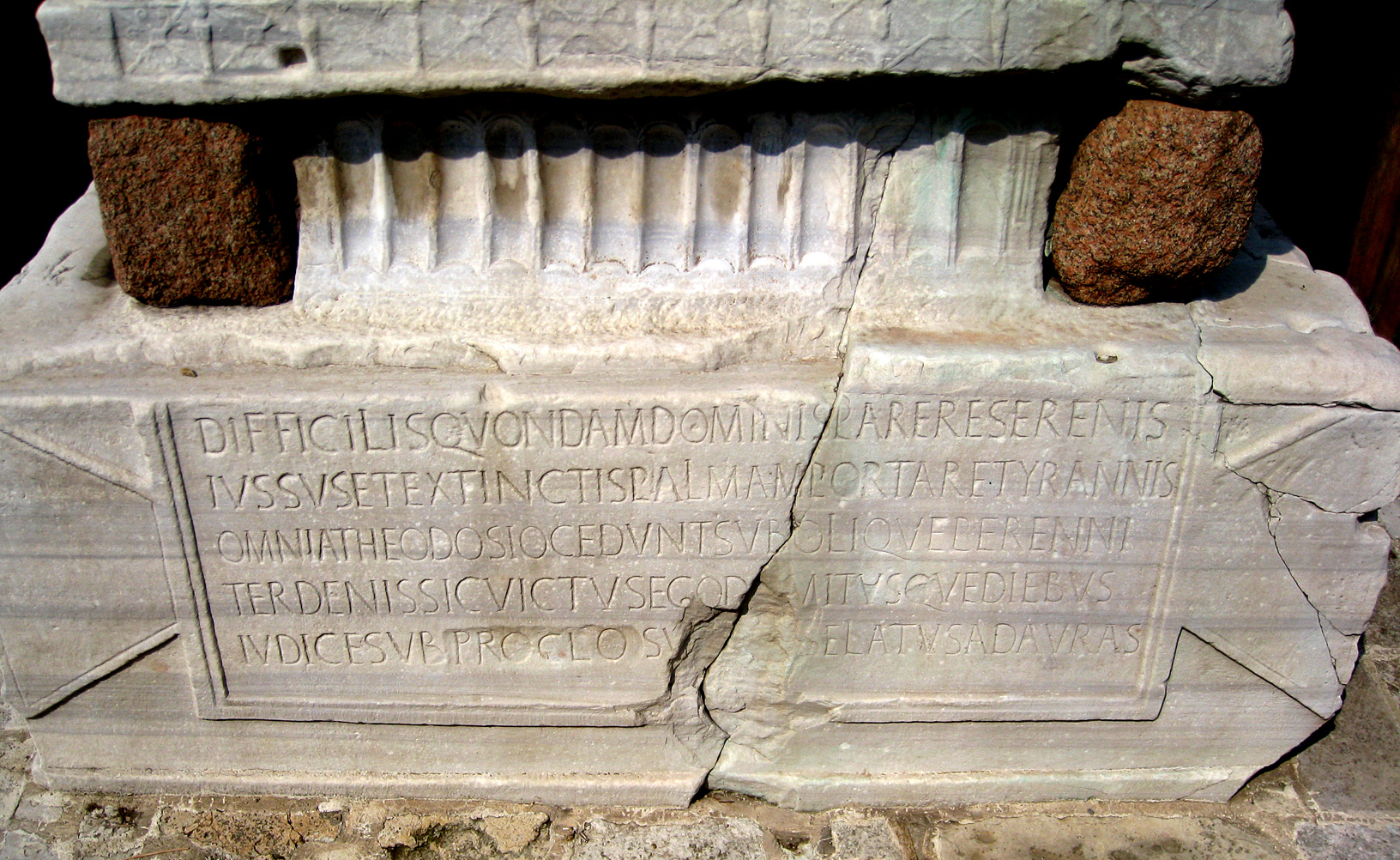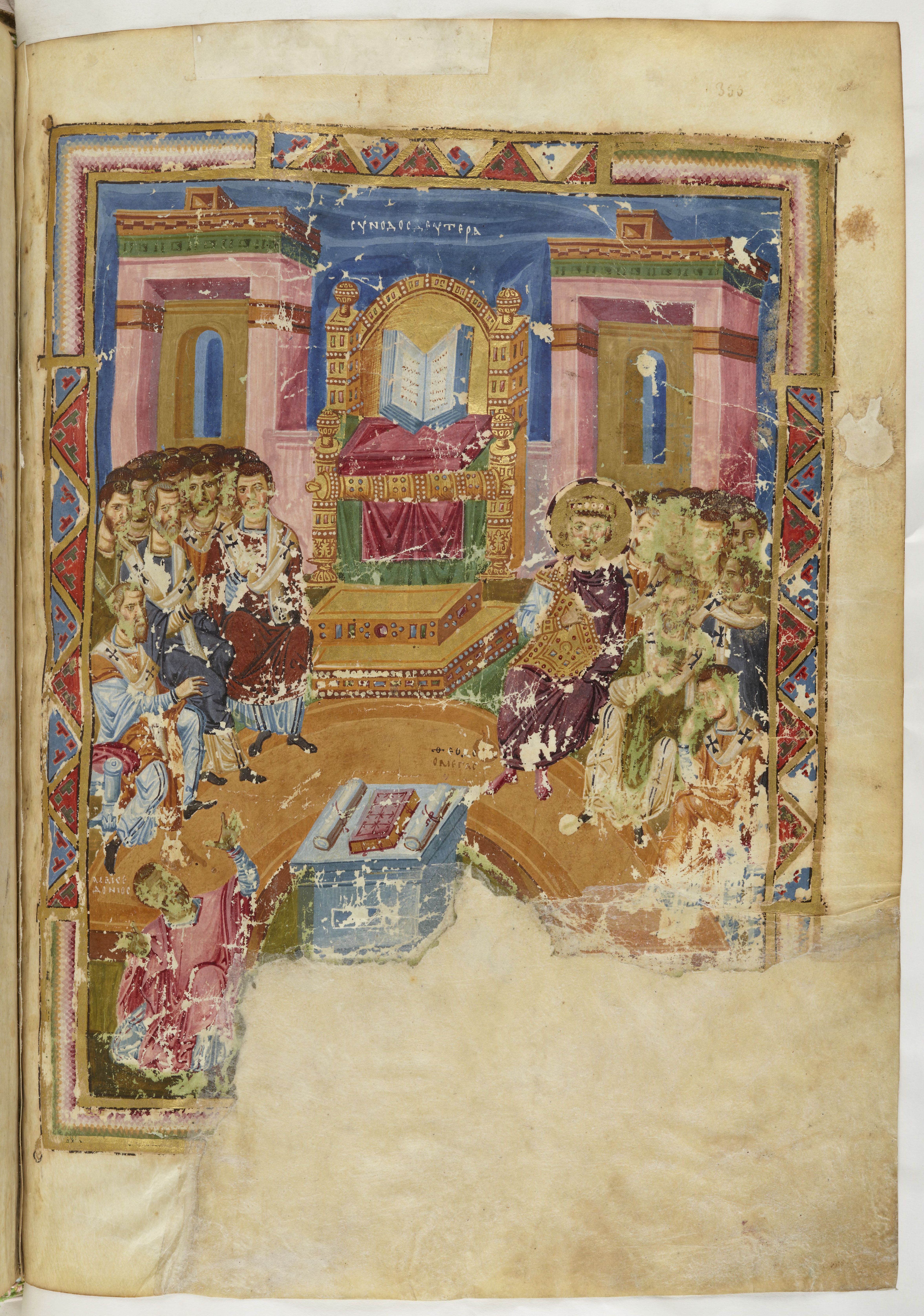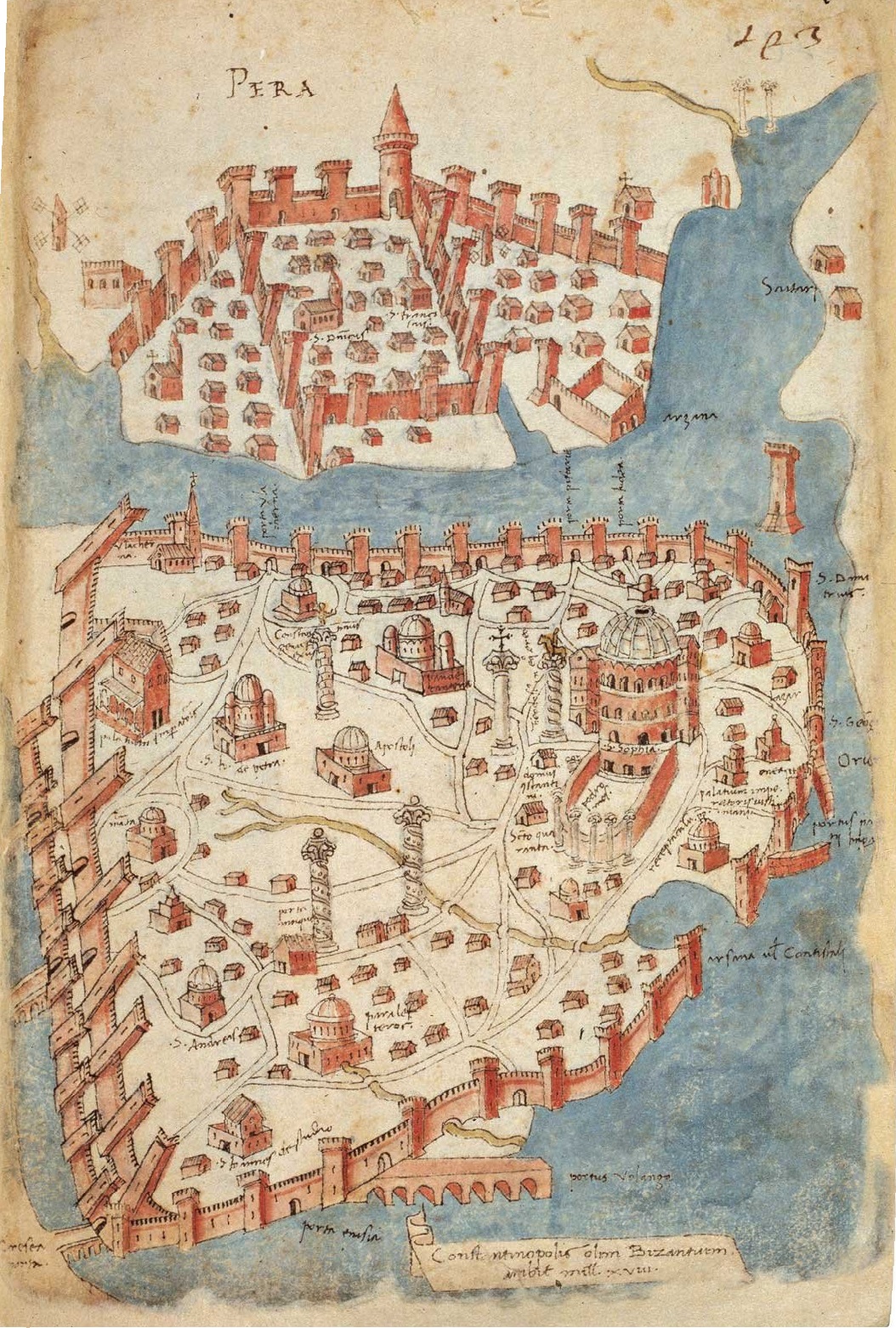|
Timeline Of Istanbul
The following is a :City timelines, timeline of the History of Istanbul, history of the town of Istanbul, Turkey. Prior to 4th century * 1000 BCE - Thracian tribes find the settlements of Lygos and Semistra. * 657 BCE – Byzantium founded by Greeks. * 513 BCE – City taken by Persians under the rule of Darius I, Darius the Great. * 479 BCE – Spartans take control of Byzantium from the Persians following their victory at the Battle of Plataea. * 411 BCE – Captured by Sparta. * 408 BCE – Captured by Athens. * 340 BCE – Besieged unsuccessfully by the forces of Philip II of Macedon. * 317 BCE – Battle of Byzantium. * 193 CE ** Besieged by Septimius Severus. ** Population: 15,000 * 196 – Captured by Septimius Severus. Walls demolished and city razed. * 203 ** Septimius Severus rebuilds the city. ** Hippodrome of Constantinople, Hippodrome built (approximate date). ** Mese (Constantinople), Mese main street built. ** Baths of Zeuxippus built (approximate date). ** Wa ... [...More Info...] [...Related Items...] OR: [Wikipedia] [Google] [Baidu] |
Column Of Constantine
The Column of Constantine ( tr, Çemberlitaş Sütunu; el, Στήλη του Κωνσταντίνου Α΄; la, Columna Constantini) is a monumental column built for Roman emperor Constantine the Great to commemorate the dedication of Constantinople on 11 May 330 AD. Built c. 328 AD, it is the oldest Constantinian monument to survive in Istanbul and stood in the centre of the Forum of Constantine. It occupies the second-highest hill of the seven hills of Constantine's ''Nova Roma'', the erstwhile Byzantium, and was midway along the ''Mese odos'', the ancient city's main thoroughfare. The Turkish name Çemberlitaş, from ' 'hooped' and ' 'stone', was applied after repairs by the Ottomans in c. 1515, who added iron reinforcing hoops to the shaft, and came to refer to the surrounding area. The column stands at the point where Yeniçeriler Caddesi ('Street of the Janissaries') joined the Divan Yolu ('Road to the Divan'), the two streets connecting Sultanahmet Square with Beyaz� ... [...More Info...] [...Related Items...] OR: [Wikipedia] [Google] [Baidu] |
Walls Of Constantinople
The Walls of Constantinople ( el, Τείχη της Κωνσταντινουπόλεως) are a series of defensive stone walls that have surrounded and protected the city of Constantinople (today Istanbul in Turkey) since its founding as the new capital of the Roman Empire by Constantine the Great. With numerous additions and modifications during their history, they were the last great fortification system of antiquity, and one of the most complex and elaborate systems ever built. Initially built by Constantine the Great, the walls surrounded the new city on all sides, protecting it against attack from both sea and land. As the city grew, the famous double line of the Theodosian Walls was built in the 5th century. Although the other sections of the walls were less elaborate, they were, when well-manned, almost impregnable for any medieval besieger. They saved the city, and the Byzantine Empire with it, during sieges by the Avar-Sassanian coalition, Arabs, Rus', and Bulgar ... [...More Info...] [...Related Items...] OR: [Wikipedia] [Google] [Baidu] |
Column Of Arcadius
The column of Arcadius ( tr, Arkadyos Sütunu or ''Avrat Taşı'') was a Roman triumphal column in the forum of Arcadius in Constantinople built in the early 5th century AD. The marble column was historiated with a spiralling frieze of reliefs on its shaft and supported a colossal statue of the emperor, probably made of bronze, which fell down in 740. Its summit was accessible by an internal spiral staircase. Only its massive masonry base survives. It is known as the ''Avret Taş'' in Turkish and located on Haseki Kadın Sokak in the Fatih district of Istanbul. It is now mostly surrounded by modern buildings. History The column and forum of Arcadius were on the Seventh Hill of Constantinople, also known as the ''Xerolophos'' (Greek ). The column's construction was begun after 401 to commemorate Arcadius's triumph over the Goths under the renegade ''magister militum'' Gainas in the wars of 399–401. Arcadius died in 408, but the column was only completed in 421, so the forum of ... [...More Info...] [...Related Items...] OR: [Wikipedia] [Google] [Baidu] |
Gainas
Gainas (Greek: Γαϊνάς) was a Gothic leader who served the Eastern Roman Empire as ''magister militum'' during the reigns of Theodosius I and Arcadius. Gainas began his military career as a common foot-soldier, but later commanded the barbarian contingent of Theodosius' army against the usurper Eugenius in 394. Under the command of Gainas, a man of "no lineage", was the young Alaric of the Balti dynasty. In 395, Stilicho sent him with his troops, under the cover of strengthening the armies of the East, to depose the prefect Rufinus, who was hostile to Stilicho. Gainas murdered Rufinus, but the eunuch Eutropius, who was likewise Stilicho's enemy, gained power. Gainas remained mostly unrewarded by the influential eunuch, which increased his resentment. In 399 he finally rose in stature by replacing ''magister militum'' Leo. This was after the latter failed to quell the insurrection of the Ostrogoths in Asia Minor, led by the chieftain Tribigild, who was also hostile to ... [...More Info...] [...Related Items...] OR: [Wikipedia] [Google] [Baidu] |
Forum Of Theodosius
The Forum of Theodosius ( el, φόρος Θεοδοσίου, today Beyazıt Square) was probably the largest square in Constantinople and stood on the Mese, the major road that ran west from Hagia Sophia ( Turkish: Ayasofya). It was originally built by Constantine I, probably on the site of a pre-existing Hellenistic agora called the Strategion, and named the ''Forum Tauri'' ("Forum of the Bull"). In 393, however, it was renamed after Emperor Theodosius I, who rebuilt it after the model of Trajan's Forum in Rome, surrounded by civic buildings such as churches and baths and decorated with a triumphal column at its centre. Column of Theodosius Somewhere in the forum stood a Roman triumphal column erected in honour of emperor Theodosius I by his son Arcadius, who ruled as the Eastern Emperor after his father's death in A.D. 395. It probably stood in what is now the grounds of Istanbul University, on the north side of Beyazıt Square. Its shaft, decorated with relief sculpture d ... [...More Info...] [...Related Items...] OR: [Wikipedia] [Google] [Baidu] |
Obelisk Of Theodosius
The Obelisk of Theodosius ( tr, Dikilitaş) is the Ancient Egyptian obelisk An obelisk (; from grc, ὀβελίσκος ; diminutive of ''obelos'', " spit, nail, pointed pillar") is a tall, four-sided, narrow tapering monument which ends in a pyramid-like shape or pyramidion at the top. Originally constructed by An ... of Pharaoh Thutmose III re-erected in the Hippodrome of Constantinople, Hippodrome of Constantinople (known today as ''At Meydanı'' or ''Sultanahmet Meydanı'', in the modern city of Istanbul, Turkey) by the Roman Empire, Roman emperor Theodosius I in the 4th century AD. History The obelisk was first erected during the Eighteenth Dynasty of Egypt, 18th dynasty by Pharaoh Thutmose III (1479–1425 BC) to the south of the seventh pylon (architecture), pylon of the great Karnak, temple of Karnak. The Roman emperor Constantius II (337–361 AD) had it and another obelisk transported along the river Nile to Alexandria to commemorate his ''ventennalia'' or 20 ye ... [...More Info...] [...Related Items...] OR: [Wikipedia] [Google] [Baidu] |
First Council Of Constantinople
The First Council of Constantinople ( la, Concilium Constantinopolitanum; grc-gre, Σύνοδος τῆς Κωνσταντινουπόλεως) was a council of Christian bishops convened in Constantinople (now Istanbul, Turkey) in AD 381 by the Roman Emperor Theodosius I. This second ecumenical council, an effort to attain consensus in the church through an assembly representing all of Christendom, except for the Western Church,Richard Kieckhefer (1989). "Papacy". ''Dictionary of the Middle Ages''. . confirmed the Nicene Creed, expanding the doctrine thereof to produce the Niceno-Constantinopolitan Creed, and dealt with sundry other matters. It met from May to July 381 in the Church of Hagia Irene and was affirmed as ecumenical in 451 at the Council of Chalcedon. Background When Theodosius ascended to the imperial throne in 380, he began on a campaign to bring the Eastern Church back to Nicene Christianity. Theodosius wanted to further unify the entire empire behind the ... [...More Info...] [...Related Items...] OR: [Wikipedia] [Google] [Baidu] |
Battle Of Constantinople (378)
The Battle of Constantinople was a Gothic attack on Constantinople in 378 following the Gothic victory at the Battle of Adrianople. The emperor Valens's widow prepared the defence, and also reinforced the city with Arab warriors, who performed excellently in combat. It is said that the Goths were impressed when one of the Arab warriors stormed out of the city naked, slaughtered enemies, and drank blood from the neck of a decapitated Goth. Other sources maintain that the Goths actually abandoned the attack because they were greatly outnumbered. In the end, Goths did not enter the city and retreated to Thrace, Illyria, and Dacia Dacia (, ; ) was the land inhabited by the Dacians, its core in Transylvania, stretching to the Danube in the south, the Black Sea in the east, and the Tisza in the west. The Carpathian Mountains were located in the middle of Dacia. It .... References 378 Constantinople 378 Constantinople 378 Constantinople 378 Sieges of Constantinople ... [...More Info...] [...Related Items...] OR: [Wikipedia] [Google] [Baidu] |
Magnaura
The Magnaura (Medieval el, , possibly from Latin: ''Magna Aula'', "Great Hall") was a large building in Byzantine Constantinople located next to the Great Palace. It was situated to the east of the Augustaion, close to the Hagia Sophia, and next to the Chalke Gate and has often equated by scholars with the building that housed the Senate.Prokopios, ''De Aedeficiis'' History Some scholars have claimed that the Magnaura was founded in 425 A.D. during the reign of Emperor Theodosius II. However, others dispute this assertion on the grounds that it arises from an incorrect conflation of the University of Constantinople with the later palace school (''ekpaideutērion'') housed at the Magnaura that was founded by ''caesar'' Bardas in the mid-9th century. The location and architectural features of the Magnaura seem to correspond with those provided by Procopius in his description of the Senate House, which was rebuilt by Justinian I. Around 682, the Magnaura was restored. Later ... [...More Info...] [...Related Items...] OR: [Wikipedia] [Google] [Baidu] |
Valens Aqueduct
The Aqueduct of Valens ( tr, Valens Su Kemeri, grc, Ἀγωγὸς τοῦ ὕδατος, translit=Agōgós tou hýdatos, lit=aqueduct) was a Roman aqueduct system built in the late 4th century AD, to supply Constantinople – the capital of the eastern Roman empire. Construction of the aqueduct began during the reign of the Roman emperor Constantius II () and was completed in 373 by the emperor Valens (). The aqueduct remained in use for many centuries. It was extended and maintained by the Byzantines and the Ottomans. Initially, the Aqueduct of Valens carried water from springs at Danımandere and Pınarca; the channels from each spring met at Dağyenice. This 4th-century first phase of the system was long. A second, 5th-century phase added a further of conduits that took water from Vize, away from Constantinople. The final and most visible aqueduct bridge in the system survives in the Fatih district of Istanbul, Turkey. Named in , it is an important landmark in the cit ... [...More Info...] [...Related Items...] OR: [Wikipedia] [Google] [Baidu] |
Kontoskalion
The Kontoskalion ( gr, Κοντοσκάλιον), also known as Harbour of Julian (emperor), Julian ( la, Portus Iulianus, gr, Λιμὴν τοῦ Ἰουλιανοῦ), Portus Novus ("New Port"), or Harbour of Sophia, wife of Justin II, Sophia ( gr, Λιμὴν τῆς Σοφίας or Λιμὴν τῶν Σοφιῶν ή Σοφιανῶν), and in Ottoman Empire, Ottoman times as Kadırga Limanı ("Harbour of the Galleys") was a harbour in the city of Constantinople, active from the 6th century until the early Ottoman period. In the literature it has been known under several names, and the sources about it are often contradictory.. Location The harbour lay in an inlet – still recognizable today in the flat landscape profile – of the Marmara Sea, in the third region of the city, at the southwest end of the valley of the Hippodrome of Constantinople, Hippodrome. The area of the harbour complex covers part of today's ''Mahalleler'' of ''Kadırga Limanı'' and Kumkapi in the Fatih ... [...More Info...] [...Related Items...] OR: [Wikipedia] [Google] [Baidu] |






